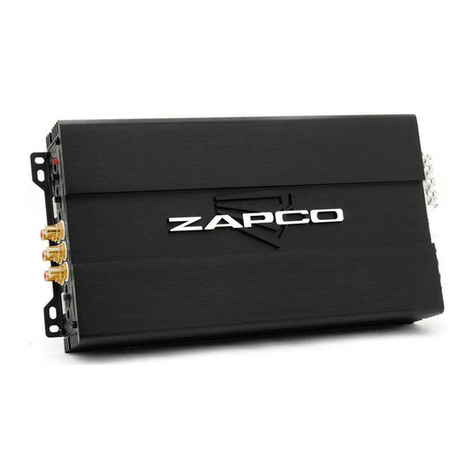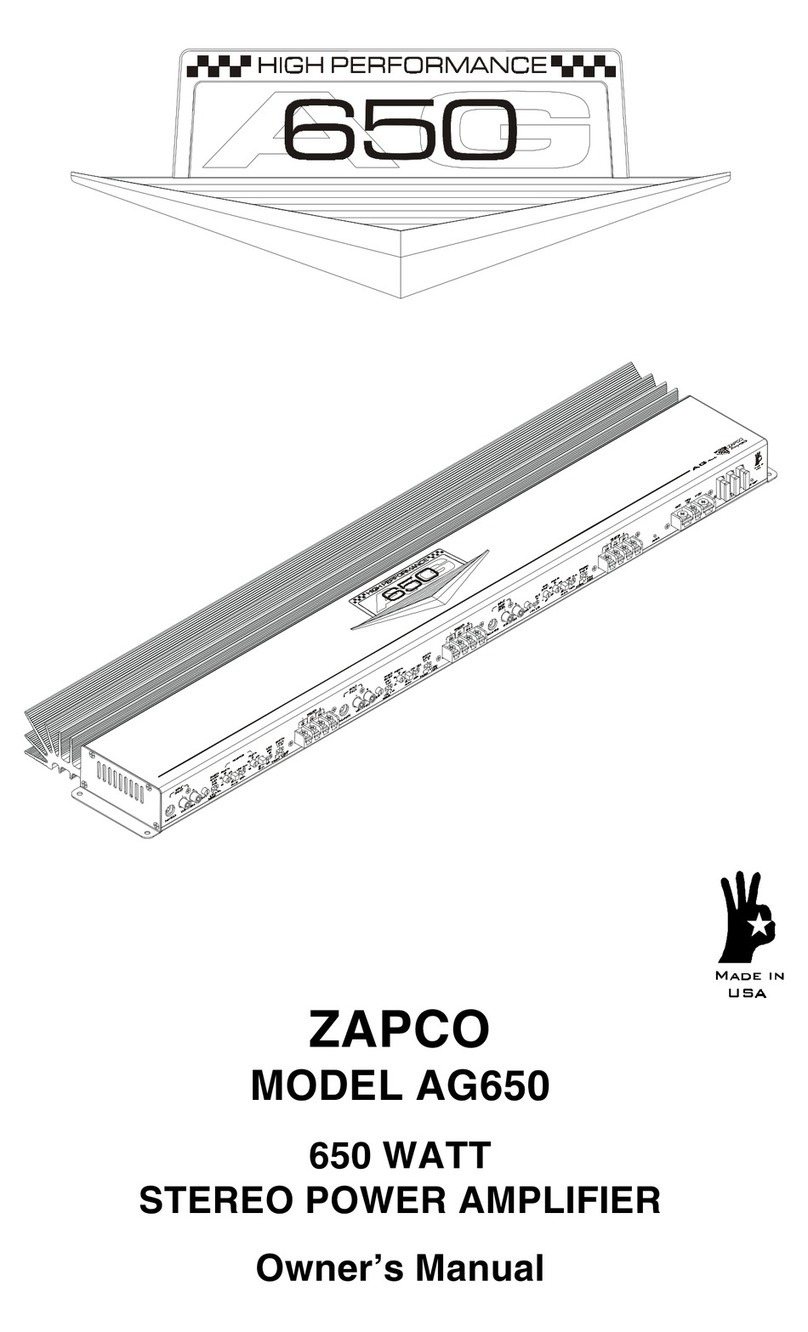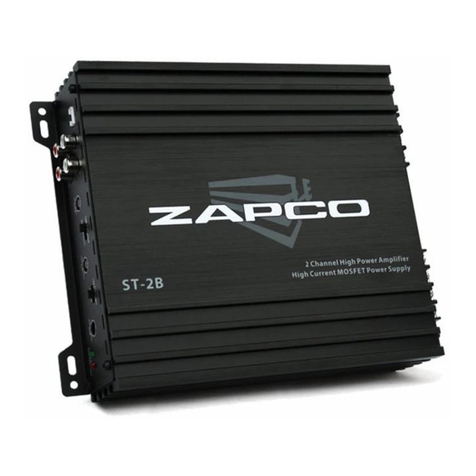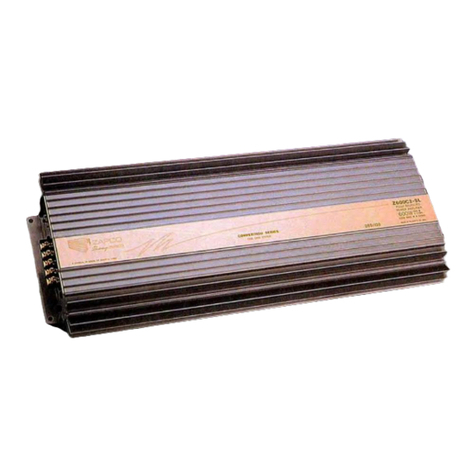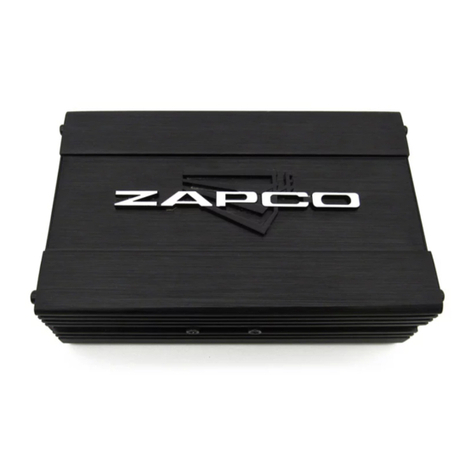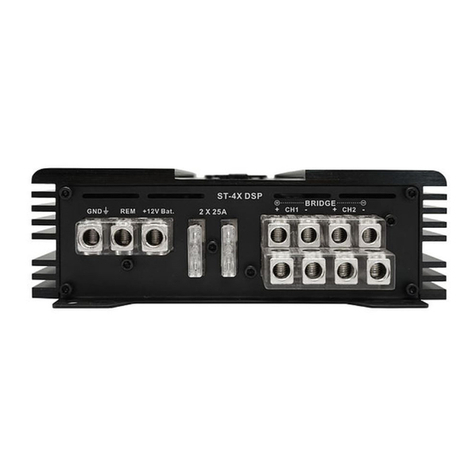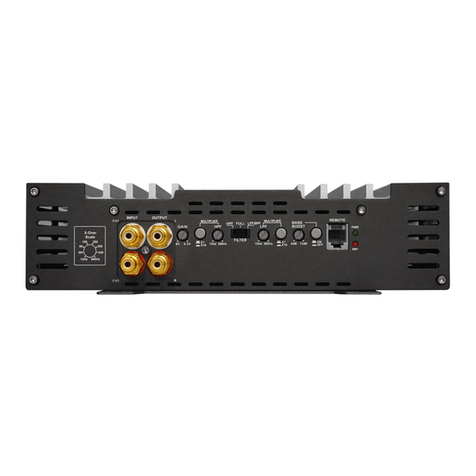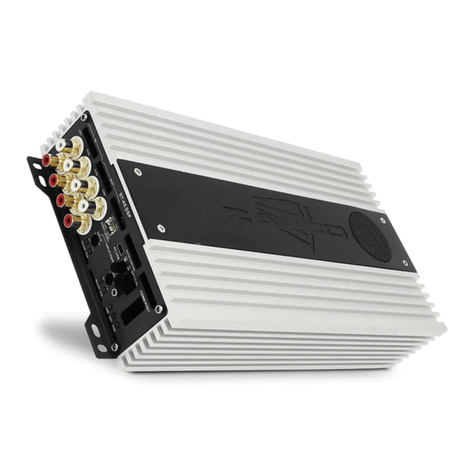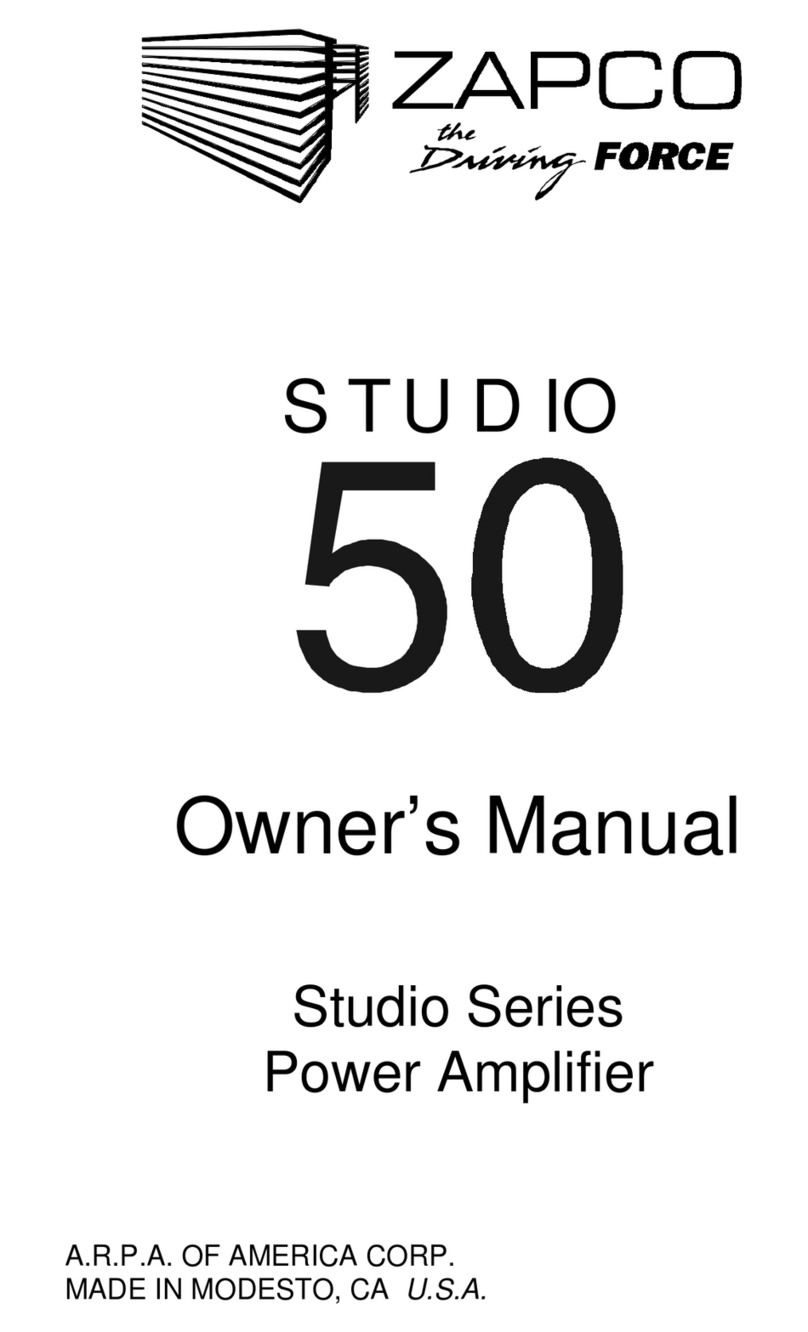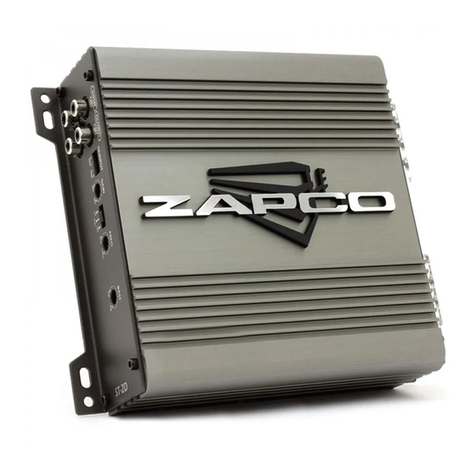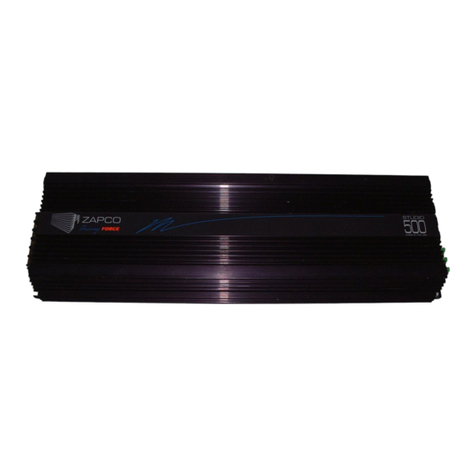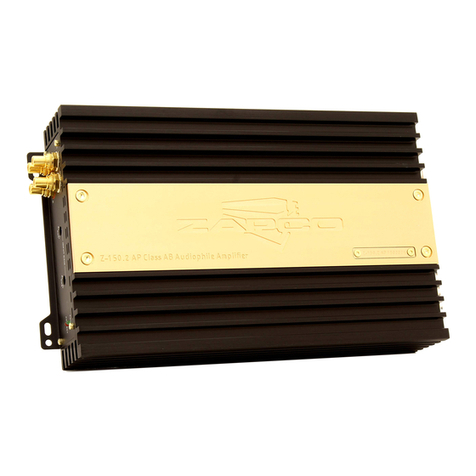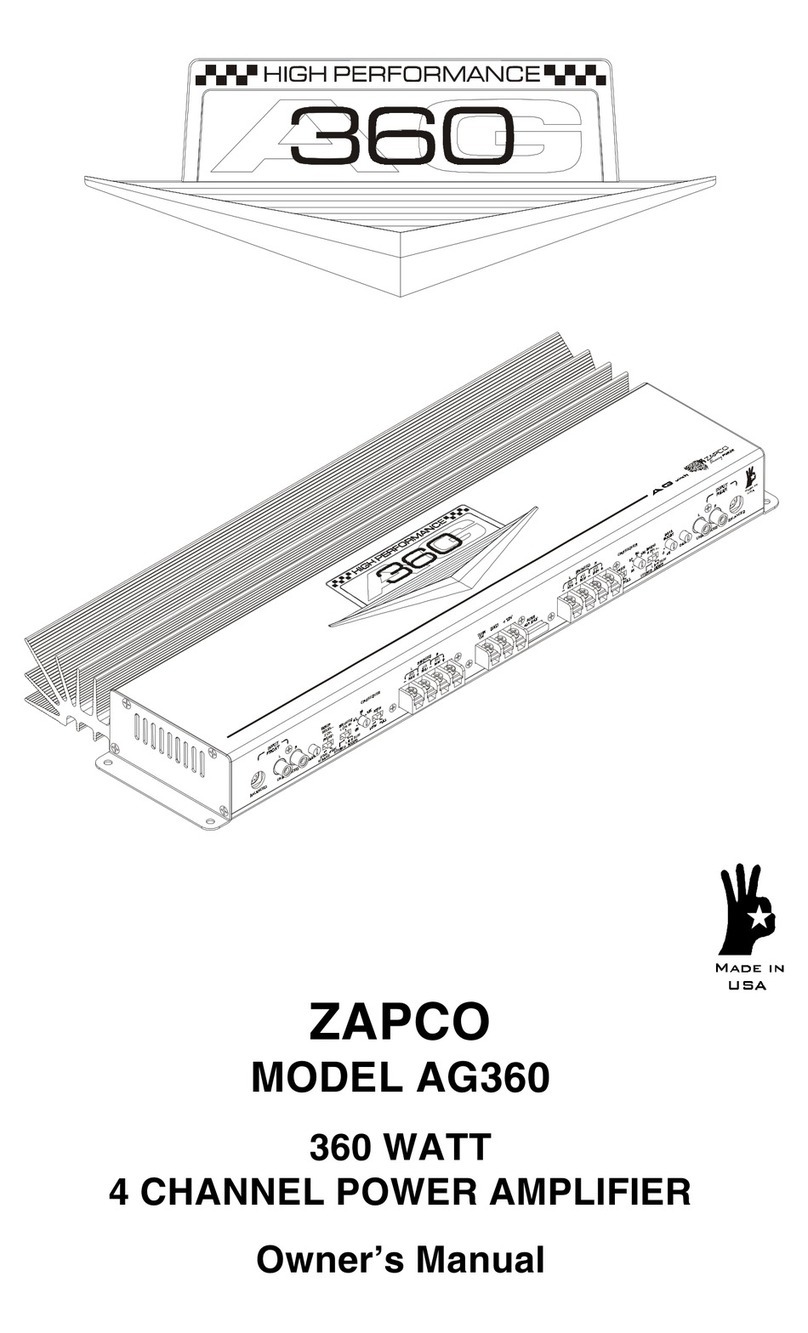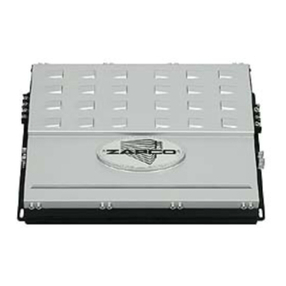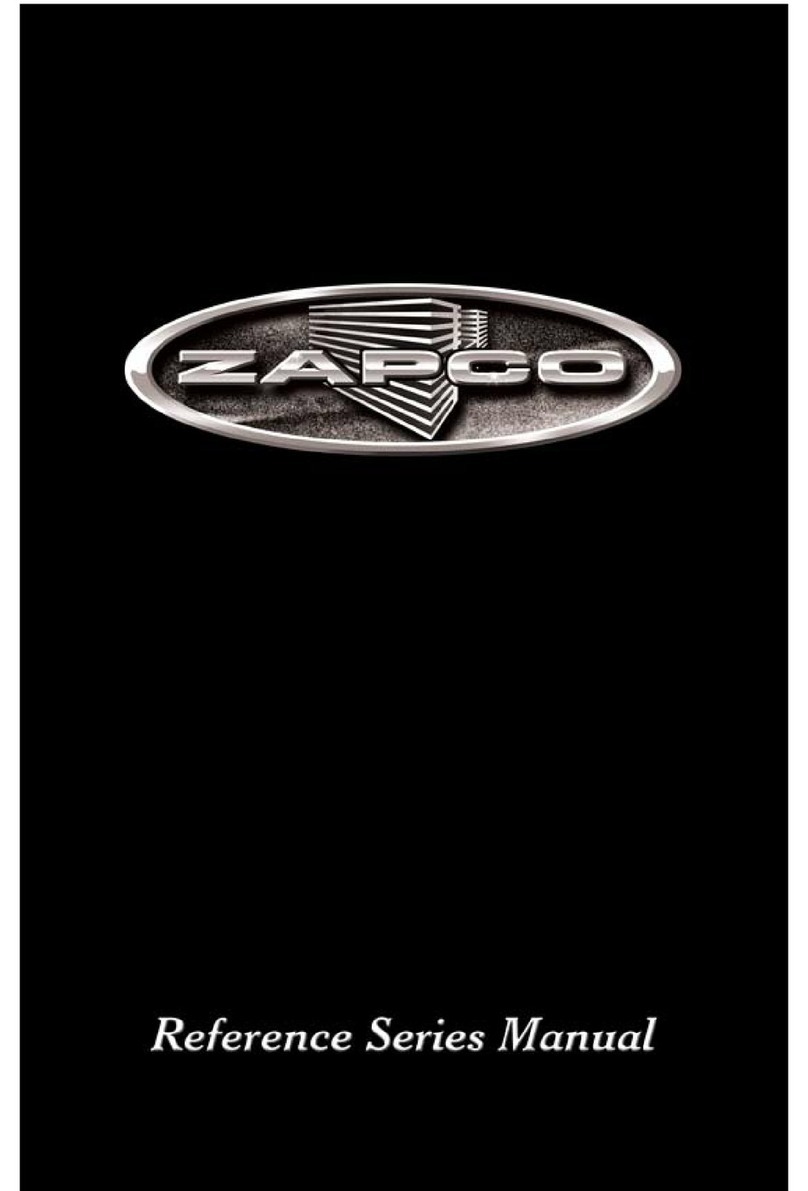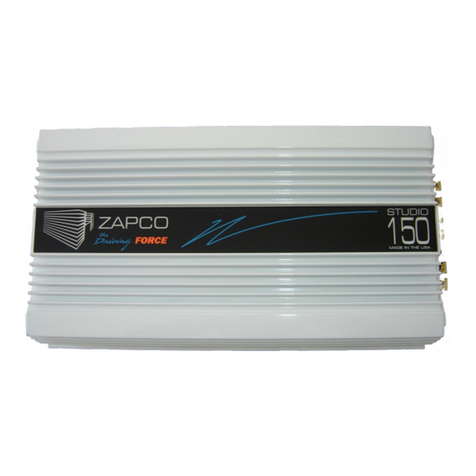
18
Software/PC requirements:
Microsoft Windows (32/64bit): XP,
Vista, Windows 7, Windows 8,
Windows 10. Continuous exposure
to excessive sound pressure levels
may cause permanent hearing loss.
ZAPCO strongly advises that you
use common sense when setting
volume levels. Everything written
in this manual is for the proper use
of the products. Some features or
specifications could be modified
during production to improve the
product performance. The technical
specifications and functionalities
stated here are current as of the time
of publication. General instructions
and safety warnings are intended
in any case to be always effective
for this type of product. The latest
manual with any updates is always
available at:
www.zapco.com/download
Type
DS rocessor
AD Signal Converter
DA Signal Converter
Hi-Level Speaker Inputs
RCA Inputs
RCA Outputs
Optical Digital Input
Coaxial Digital Input
Signal Stage
Equalizer
Delay/ olarity
Mute/Solo
Crossover Type
RMS ower
C Connection
BT Streaming
Remote Control
Size (mm)
ADS -Z8 IV-6AT
8-Ch. DSP + 6 Ch. Amp.
Cirrus Logic CS47048
32-bit/192 K z, 108 dB DR
T D+N -98 dB
Cirrus Logic CS47048
32-bit/192 K z, 108 dB DR
T D+N -98 dB
Cirrus Logic CS8422
24-bit/192 K z, 140 dB DR
T D+N -120 dB
8 Ch., 2-20 V
8 Ch., 1-5 V RMS
2 Ch., 1-5 V RMS
24-bit/192 K z
32-bit/192 K z
Freq. Response: 10 z - 22.5 K z
S/N In: 110 dBA (D)106 dBA (A)
T D+N In: 0,002% (D), 0,005% (A)
T D+N Analog In: 0,07% (DSP+Amp)
Crossotalk (1 K z): 90 dB
Crossotalk: 45 dB (DSP+Amp)
Graphic / Parametric
31-Bands
Range 0/15 ms, Step 0.02 ms
Max 515 cm, Step 0.68 cm
Polarity 0-180°
Yes, each channel
Linkw., Butterw., Bessel, Tsecheb.
6 x 80 (4Ω), 6 x 120 (2Ω)
3 x 240 Watt (4Ω/Bridged)
USB 2.0
aptX D (optinal ext. module)
1” LCD
Prev/Next/Mode/Source/Vol
213 (W) x 222 (L) x 50 ( )
ADS -Z12 IV-10A
12-Ch. DSP + 10 Ch. Amp.
Cirrus Logic CS47048
32-bit/192 K z, 108 dB DR
T D+N -98 dB
Cirrus Logic CS47048
32-bit/192 K z, 108 dB DR
T D+N -98 dB
Cirrus Logic CS8422
24-bit/192 K z, 140 dB DR
T D+N -120 dB
8 Ch., 2-20 V
8 Ch., 1-5 V RMS
2 Ch., 1-5 V RMS
24-bit/192 K z
32-bit/192 K z
Freq. Response: 10 z - 22.5 K z
S/N In: 110 dBA (D)106 dBA (A)
T D+N In: 0,002% (D), 0,005% (A)
T D+N Analog In: 0,07% (DSP+Amp)
Crossotalk (1 K z): 90 dB
Crossotalk: 45 dB (DSP+Amp)
Graphic / Parametric
31-Bands
Range 0/15 ms, Step 0.02 ms
Max 515 cm, Step 0.68 cm
Polarity 0-180°
Yes, each channel
Linkw., Butterw., Bessel, Tsecheb.
10 x 80 (4Ω), 10 x 120 (2Ω)
5 x 240 Watt (4Ω/Bridged)
USB 2.0
aptX D (optinal ext. module)
1” LCD
Prev/Next/Mode/Source/Vol
213 (W) x 291 (L) x 50 ( )
DS /Amps Technical Specifications
Type
DS rocessor
AD Signal Converter
DA Signal Converter
Hi-Level Speaker Inputs
RCA Inputs
RCA Outputs
Optical Digital Input
Coaxial Digital Input
Signal Stage
Equalizer
Delay/ olarity
Mute/Solo
Crossover Type
RMS ower
C Connection
BT Streaming
Remote Control
Size (mm)
ADS -Z16 IV-12A
16-Ch. DSP + 12 Ch. Amp.
Cirrus Logic CS47048
32-bit/192 K z, 108 dB DR
T D+N -98 dB
Cirrus Logic CS47048
32-bit/192 K z, 108 dB DR
T D+N -98 dB
Cirrus Logic CS8422
24-bit/192 K z, 140 dB DR
T D+N -120 dB
12 Ch., 2-20 V
8 Ch., 1-5 V RMS
4 Ch., 1-5 V RMS
24-bit/192 K z
32-bit/192 K z
Freq. Response: 10 z - 22.5 K z
S/N In: 110 dBA (D)106 dBA (A)
T D+N In: 0,002% (D), 0,005% (A)
T D+N Analog In: 0,07% (DSP+Amp)
Crossotalk (1 K z): 90 dB
Crossotalk: 45 dB (DSP+Amp)
Graphic / Parametric
31-Bands
Range 0/15 ms, Step 0.02 ms
Max 515 cm, Step 0.68 cm
Polarity 0-180°
Yes, each channel
Linkw., Butterw., Bessel, Tsecheb.
12 x 80 (4Ω), 12 x 120 (2Ω)
6 x 240 Watt (4Ω/Bridged)
USB 2.0
aptX D (optinal ext. module)
1” LCD
Prev/Next/Mode/Source/Vol
213 (W) x 291 (L) x 50 ( )
